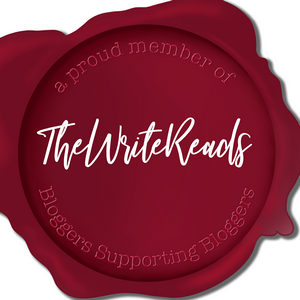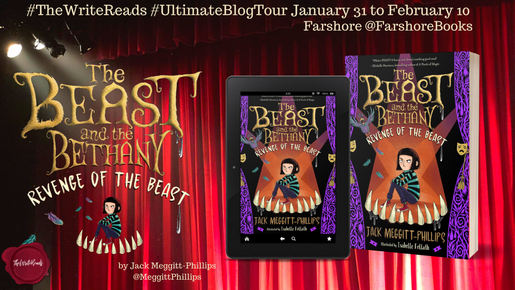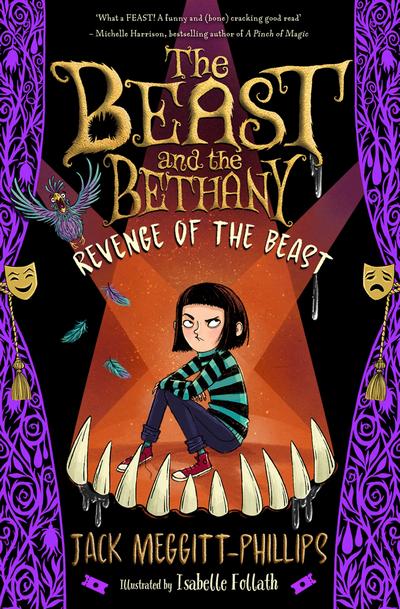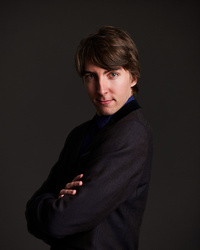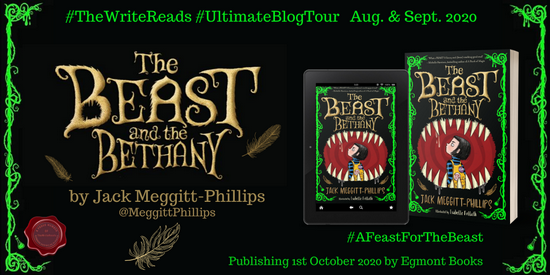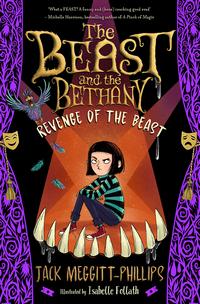 Revenge of the Beast
Revenge of the Beast
by Jack Meggitt Phillips, Isabelle Follath (Illustrator)
DETAILS: Series: The Beast and the Bethany, #2 Publisher: Aladdin (US); Farshore (UK) Publication Date: March 22, 2022 (US); September 30, 2021 (UK) Format: eARC Length: 272 pg. Read Date: February 1-2, 2022

What’s Revenge of the Beast About?
At the end of The Beast and The Bethany, Bethany, Ebenezer, and Claudette (the Wintlorian purple-breasted parrot) were sure that The Beast was vanquished and they could start living their lives in a new direction.
They’re de-Beasting their lives—getting rid of just about everything that The Beast magicked into existence for Ebenezer over the centuries—and they’re devoting their energies to do-gooding. Bethany needs to make up to people for all her pranks, and Ebenezer has a lot of karmic debt to pay off (and Bethany’s pushing him). He also is doing what he can to stay off the radar of the organization that’s been chasing the Beast for more centuries than Ebenezer’s been alive. That’ll be easier to do without magic items laying around.
But as the title of this book suggests, they were wrong. The Beast isn’t done yet, and he’s out to get back at those three—and anyone else who happens to be in the general vicinity while he’s at it.
Their do-gooding efforts stumble, the items they tried to divest themselves of start to behave strangely—and dangerously—for their new owners. No matter what they attempt to do, something goes wrong. It’s time for some drastic measures.
Comparatively Speaking, are We Sure The Beast is the Worst?
There are a handful of new characters introduced in this book, which helps in a few ways—it shows how much Bethany has changed Ebenezer’s life by expanding his social world, and it adds a little flavor to the series. But there are three new characters* in particular I want to single out: The Cussocks. Mr. and Mrs. Cussock run the theater that plays a significant role in the novel and their daughter, Gloria. Gloria reminds me of the TV version of Nellie Oleson, without the redeeming characteristics. Nellie knew how she should act and just didn’t care. I don’t think Gloria knows how she should act, she’s pure id. Once you get to know her parents, a bit, you start to see why. I’m not going to get into it, but just know that Gloria lives in the same orphanage that Bethany used to live in, because they just can’t stand her (and have no problem letting everyone—including her—know that).
* I’m pretty sure they’re new, they may have played minor roles in the first book. But I don’t think so, and I’m too lazy to check..
It’d be easy in a book like this to make The Beast the epitome of all evil, and every human and animal nothing more than a potential victim. Bethany and Ebenezer have some restitution to do and need to reform, but they’re trying. But as long as people like the Cussocks are around, the reader has to remember that people are capable of the same kind of evil as The Beast is. They don’t have magic to help, and they don’t get their sustenance from eating humans—which almost makes it worse, you could make a pragmatic argument for a lot of what The Beast does. But the Cussocks don’t have that going for them.
(but to be clear, all four of them are truly reprehensible characters)
True Horror: The Food
Sure, there’s a magic being eating people, producing magical items, and inflicting all sorts of psychological damage; a possibly sociopathic little girl inflicting pain on her peers; and a centuries-old man wandering around in this book. But the true horror? The food designed by Bethany and others.
Bethany considers herself a sandwich artist. No, she’d probably be inclined to add the “e,” she’s a sandwich artiste. Some of the flavor combinations she comes up with would make me run start swallowing Bertie Bott’s Every Flavour Beans by the handful without wondering/caring what flavors they’d be. They’re fully at the intersection of incredibly imaginative and incredibly unappealing.
It’s the kind of humor that an MG reader is practically guaranteed to enjoy.
Illustrations
I’m pretty sure neither of these books would be as successful without the contributions of Isabelle Follath. Her illustrations—sort of a mash-up of Eugene Yelchin, Quentin Blake, and Jules Feiffer—are attractive, eye-catching, and augment the text without being a distraction. I made more notes than usual about liking the artwork in this novel. Rather than further demonstrate how poorly I describe art, I’ll just say that her stuff is great and leave it at that.
So, what did I think about Revenge of the Beast?
I know when I posted about The Beast and The Bethany, I was aware that it was the first of a series, but I have to tell you, I thought it made a great stand-alone book. So much so that I forgot there were more books to come, I got this one primarily out of curiosity about how Meggitt-Phillips would approach this, rather than a curiosity about the characters or story. I was satisfied with where the first book left things.
That said, if you’re going to write an unnecessary sequel, this is the way you want to do it. Give some good backstory about the antagonist and one of the protagonists, and help the reader understand how they got started five centuries ago. Then while you’re doing that, show how everything you thought happened at the end of the first book wasn’t at all what was going on—so we need to read the sequel. It was really well-conceived in that way. But given the two that exist, we definitely need a third (which is, thankfully, on the way)
I think it’s best if I think of this in two different ways, it’s a creative way to tell this story, the morals are there for those who want to see them (again), but are easily ignored if that’s what the reader prefers. The humor is a bit subtler this time out, but it’s just as funny if you’re looking for it. I was honestly surprised by a couple of plot developments, too. But…it just didn’t work as well for me as its predecessor. Like I said with And Your Enemies Closer, a lot of that is likely just the way second novels in a trilogy strike me. But I don’t think it’s all of the reason why. I think it’s probably a function of separating (for good and understandable reasons of plot) Ebenezer and Bethany for so much of the book. The series is stronger when they’re together.
On the other hand, if I got this book when I was in Fifth Grade? I’d really dig it, and it would earn a spot in my Roald Dahl-Daniel M. Pinkwater-Norton Juster re-read cycle, right alongside The Beast and The Bethany, and I’d get it read at least four more times before the third volume is released. Since that guy is the one that Meggitt-Phillips is writing for, not the guy with four adult children—I figure that’s good enough.
At least three of my four kids would’ve loved this when they were the right age (and it’s possible that the fourth one would’ve, too)—and I’m willing to bet that whatever parents are reading this would find similar results in their homes. They should pick this up and see.

This post contains an affiliate link. If you purchase from it, I will get a small commission at no additional cost to you. As always, opinions are my own.

My thanks to The Write Reads for the invitation to participate in this tour and the materials they provided, via Netgalley and Farshore.
